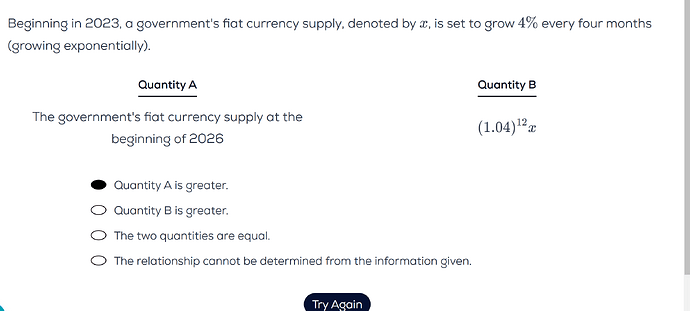Can someone explain this question and answer?
My approach - using CI formula - I put p(1+r/n)^nt = x(1+4/3)^3x3.
I am making an error in the term in the bracket. Why do we not divide the 4% interest every 4 months to find the compunding annually?
Correct answer for A is x(1.04)^9 and hence B is greater.
Hope someone can help!
You divide by 3 in compound interest because they usually give you the annual interest (interest per year), but in this case they’ve given you the interest you get every term so there’s no reason to divide.
For example, if i were to give you 10 \% interest per year but you get paid half yearly (every 6 months) then you’re looking to do:
A = P\left(1 + \frac{0.1}{2}\right)^2
to calculate the money accrued after a year has elapsed. However, if I give you the interest you gain every 6 months then there would be no need for this.
1 Like
